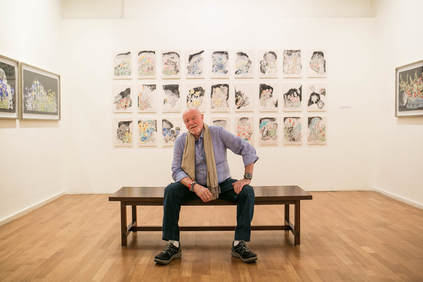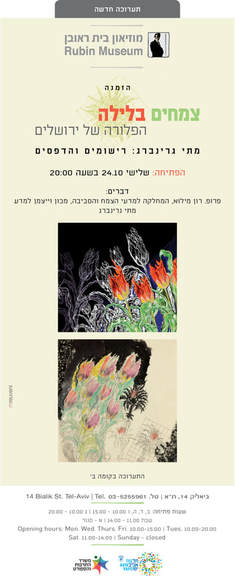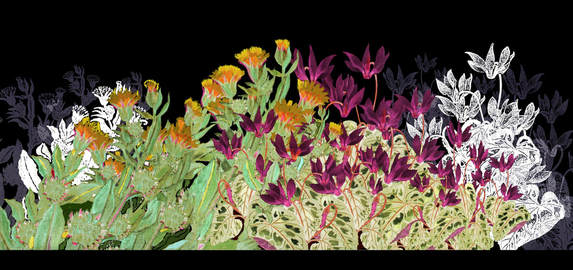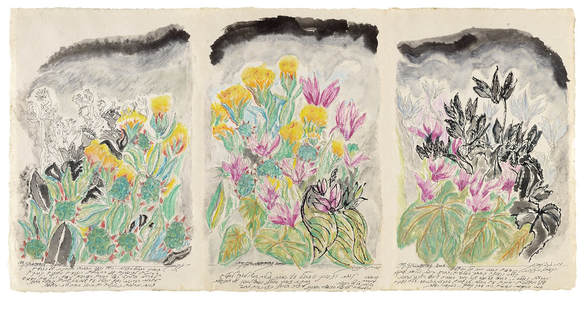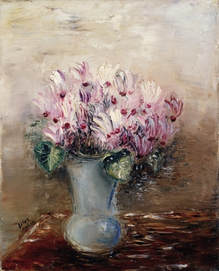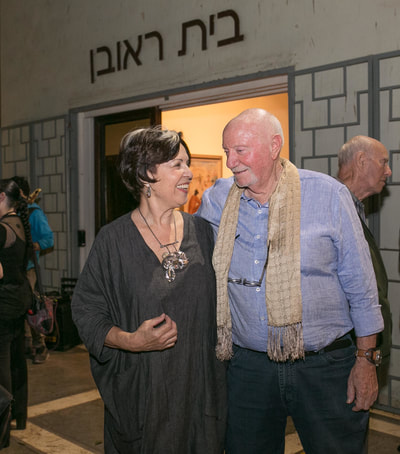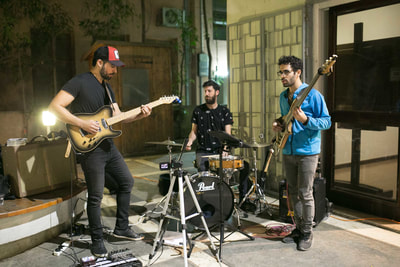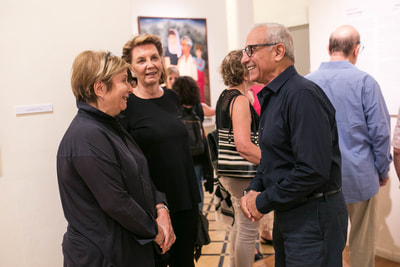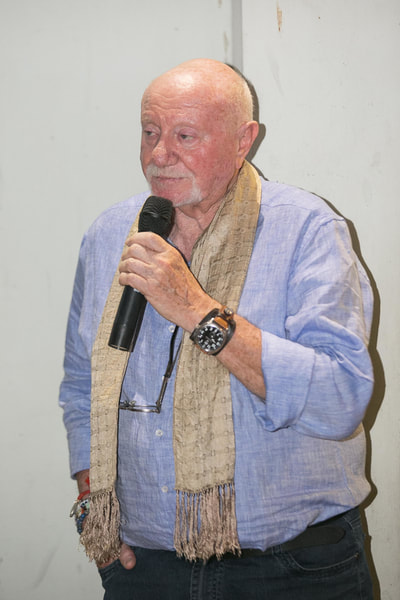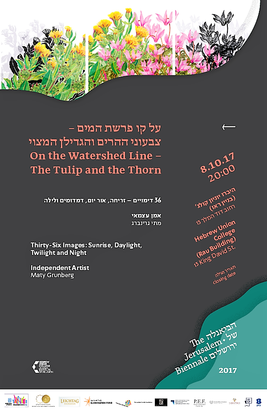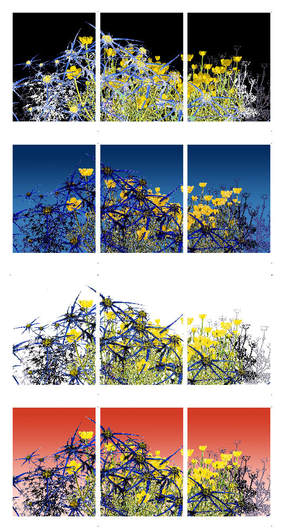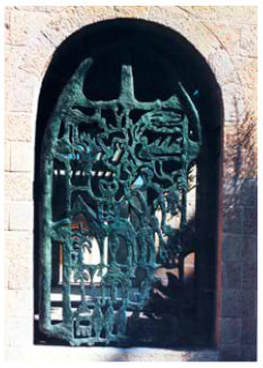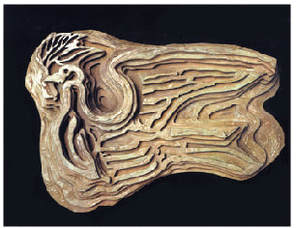| November 2017 Maty Grunberg / Plants by Night / Rubin Museum On October 24, 2017 at 20:00 we celebrated the opening of artist Maty Grunberg's exhibition 'Plants by Night' at the Rubin Museum in Tel Aviv. The exhibition was curated by Carmela Rubin, curator and artistic director of the Rubin Museum and Edna Erde – curator and head of the Rubin Museum library and archives. Included in the exhibition are images of wild plants at night and, for the first time, a display of the original preliminary drawings made by Maty G. while he cast about for the right concept for the project. |
The decision to expose these drawings to the public was not an easy one. It was the first meeting between the artist and the curators that opened the drawer on the original drawings. The 'Plants by Night' works were created using 21st century Digi graphical techniques, ink jet printing also known as giclée. Unlike the current art trend, and to a certain degree to the dissatisfaction of Maty G. who dislikes the description "beautiful" being assigned to his artwork, the works are hypnotizing in their beauty. When Carmela and Edna saw the "finished" works, they asked Maty G. if he still had the drafts. The question was of course redundant as Maty G. is a well-known hoarder who is loath to dispose of anything. In fact, the thought that accords him the most pleasure is that we will be ultimately buried with all his belongings in an underground pyramid and will succeed in interesting Tutankhamen in his treasures, maybe even trading some of them in exchange for some authentic artifacts of the Pharaohs… Maty G. reluctantly replied that the original drawings are almost certainly somewhere in his studio, hidden away deep in one of the drawers. "We want to see them", the two said. "What for?" Maty G. asked, "they are not meant for display - I used them when I planned the project." However, nothing can stand in Carmela and Edna's way when they insist, not even Maty G. and so, following their departure, off he went, grumbling under his breath, to look for the drawings. And finding them. The drawings arouse admiration no less than the final works. And so, the drawings/aquarelles drawn in pencil, Chinese ink, and water colors are displayed in the exhibition alongside the strong and vivid images of "Plants by Night". Observing them, one can discern the quest the way the images will be ultimately constructed. The power of the drawings is in their great delicacy, in the possibility to follow the movement of the artist's hand. The curators, Carmela and Edna, chose to hang the drawings densely, on a single wall, thereby creating a real wild field.
Among the list of thanks accompanying the exhibition, my eye was drawn to a special thank you from the artist to his son, David Ben-Grunberg, in which Maty G. thanks him for his computer skills, as well as his patience and sense of humor. In his childhood, David spent countless hours in his father's studio, and became an expert at constructing Lego buildings and is today a talented and successful architect. David assisted his father in organizing the preliminary images of wild plants into a collage on a computer screen. There is something touching in a father paving the creative path for his son with the latter reciprocating by opening the gate to renewing works for his father. Herein lies the added value of the exhibition in which two techniques are displayed alongside each other. The first, ancient, sketching and drawing, while the second – modern Digi graphic inkjet printing.
Maty G. graduated from the Bezalel Academy of Arts and Design in Jerusalem and moved to London to further his studies and to specialize in 19th century etching technique. He worked with this technique for, subsequently also specializing in woodcut and silk printing techniques. He was then curious to see what could be achieved with modern-day computer software techniques and 21st century digital printing methods.
One can detect Maty G.'s effervescent curiosity and courage to strive towards the unknown, even as a well-established and recognized artist, as can the personality trait, in my opinion rare among artists – the ability and need to work with other people, both learning from and teaching them, thereby enabling the exploration of new places, to excite and be excited.
And indeed, in completing this project, printed at 'Jerusalem Fine Art Prints' headed by Yair Medina, Maty G. has expanded his own boundaries of performance, since creating many works with 21st century Digi-graphic techniques.
* * *
In many of his works, Maty G. deals with the eternal struggle for survival that has characterized life in Jerusalem for thousands of years. He drew and created woodcuttings of the animals in Jerusalem, both predators and hunted, in the portfolio "Jerusalem: 1967-1990" that he compiled together with the poet Yehuda Amichai.
http://www.matygrunberg.com/wildlife-confrontation-in-jerusalem.html
In 2006, he embarked in search of a new project, a different metaphor to represent the conflict inherent in life in Jerusalem. Inspired by the botanical gardens on Mount Scopus and working at dawn, during the day, at twilight and at night, he created in 2008 a giant work – 4 volumes of an artist's album – "Jerusalem: The Tulip and the Thorn" together with Dr. Michael Avishai, the botanical garden director, and the writer Amos Oz, sections of whose book 'A Tale of Love and Darkness' were integrated into the album. This time, it was the plants that were the heroes. Maty G. did not choose cultivated, well-pampered and elegant plants to glorify their owners by their beauty, but rather, wild plants, the unnoticed anti-heroes that grow on the waysides, in the rocky fences, in the wall, fighting for their lives – these are the true survivors.
http://www.matygrunberg.com/the-tulip--the-thorn.html
The work 'Plants by Night' was created in 2015 as a continuation to "Wild Plants".
2015 was a difficult year – terror attacks in Israel and overseas caused a feeling that the country's security, even existence, was under threat, and a sense of international isolation. This was all set against the geo-political backdrop in which Israel dwells, an extremely unstable environment, and which is characterized by painful struggles and cruel wars in our neighbors' countries. The prints displayed in the exhibition express the artist's view of this reality.
It is specifically when set against the dark night, that the vivid colors of the modest wild plants are striking, alive more than ever, frontstage for one moment, lit up by the lights of a passing car.
The exhibition is a gesture by Maty Grunberg to the artist Reuven Rubin, many of whose works feature flowers, and especially to the painting "Cyclamen".
The Rubin Museum http://www.rubinmuseum.org.il/he/home/a/main/
written by Naomi R. Azar, M.G. Studio Manager
Among the list of thanks accompanying the exhibition, my eye was drawn to a special thank you from the artist to his son, David Ben-Grunberg, in which Maty G. thanks him for his computer skills, as well as his patience and sense of humor. In his childhood, David spent countless hours in his father's studio, and became an expert at constructing Lego buildings and is today a talented and successful architect. David assisted his father in organizing the preliminary images of wild plants into a collage on a computer screen. There is something touching in a father paving the creative path for his son with the latter reciprocating by opening the gate to renewing works for his father. Herein lies the added value of the exhibition in which two techniques are displayed alongside each other. The first, ancient, sketching and drawing, while the second – modern Digi graphic inkjet printing.
Maty G. graduated from the Bezalel Academy of Arts and Design in Jerusalem and moved to London to further his studies and to specialize in 19th century etching technique. He worked with this technique for, subsequently also specializing in woodcut and silk printing techniques. He was then curious to see what could be achieved with modern-day computer software techniques and 21st century digital printing methods.
One can detect Maty G.'s effervescent curiosity and courage to strive towards the unknown, even as a well-established and recognized artist, as can the personality trait, in my opinion rare among artists – the ability and need to work with other people, both learning from and teaching them, thereby enabling the exploration of new places, to excite and be excited.
And indeed, in completing this project, printed at 'Jerusalem Fine Art Prints' headed by Yair Medina, Maty G. has expanded his own boundaries of performance, since creating many works with 21st century Digi-graphic techniques.
* * *
In many of his works, Maty G. deals with the eternal struggle for survival that has characterized life in Jerusalem for thousands of years. He drew and created woodcuttings of the animals in Jerusalem, both predators and hunted, in the portfolio "Jerusalem: 1967-1990" that he compiled together with the poet Yehuda Amichai.
http://www.matygrunberg.com/wildlife-confrontation-in-jerusalem.html
In 2006, he embarked in search of a new project, a different metaphor to represent the conflict inherent in life in Jerusalem. Inspired by the botanical gardens on Mount Scopus and working at dawn, during the day, at twilight and at night, he created in 2008 a giant work – 4 volumes of an artist's album – "Jerusalem: The Tulip and the Thorn" together with Dr. Michael Avishai, the botanical garden director, and the writer Amos Oz, sections of whose book 'A Tale of Love and Darkness' were integrated into the album. This time, it was the plants that were the heroes. Maty G. did not choose cultivated, well-pampered and elegant plants to glorify their owners by their beauty, but rather, wild plants, the unnoticed anti-heroes that grow on the waysides, in the rocky fences, in the wall, fighting for their lives – these are the true survivors.
http://www.matygrunberg.com/the-tulip--the-thorn.html
The work 'Plants by Night' was created in 2015 as a continuation to "Wild Plants".
2015 was a difficult year – terror attacks in Israel and overseas caused a feeling that the country's security, even existence, was under threat, and a sense of international isolation. This was all set against the geo-political backdrop in which Israel dwells, an extremely unstable environment, and which is characterized by painful struggles and cruel wars in our neighbors' countries. The prints displayed in the exhibition express the artist's view of this reality.
It is specifically when set against the dark night, that the vivid colors of the modest wild plants are striking, alive more than ever, frontstage for one moment, lit up by the lights of a passing car.
The exhibition is a gesture by Maty Grunberg to the artist Reuven Rubin, many of whose works feature flowers, and especially to the painting "Cyclamen".
The Rubin Museum http://www.rubinmuseum.org.il/he/home/a/main/
written by Naomi R. Azar, M.G. Studio Manager

